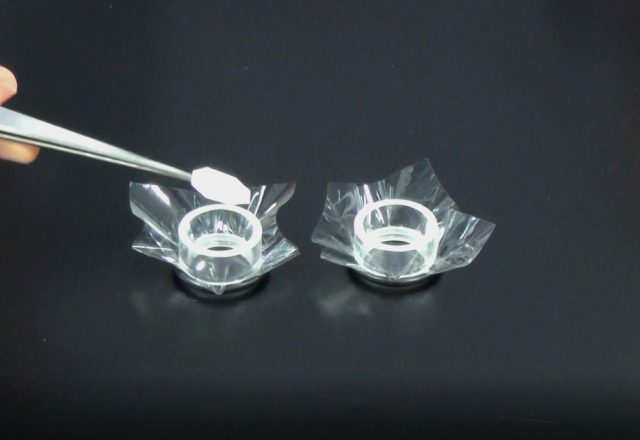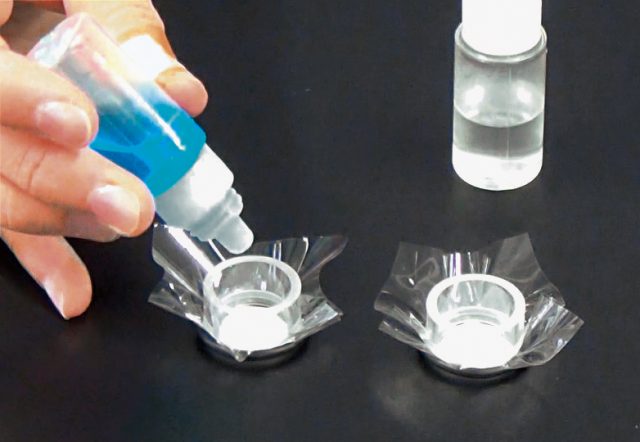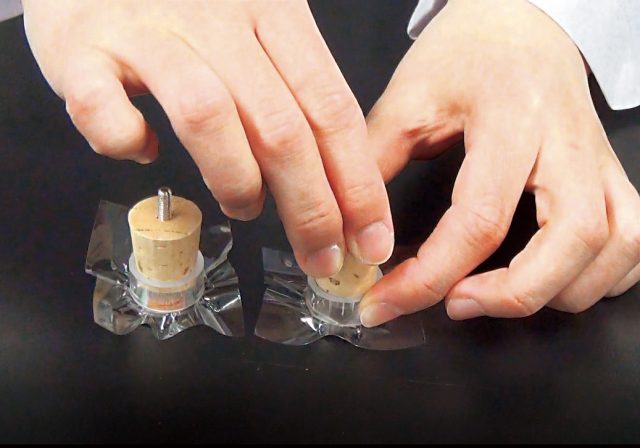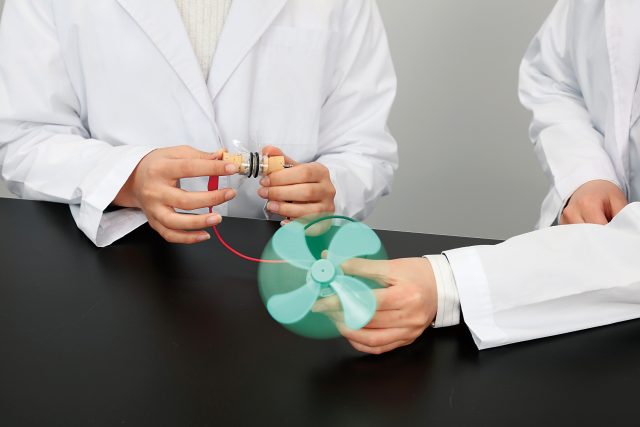Global Science Education
Study of Batteries
Miniature Daniell Cell Set (Basic Set) DH-B
B10-2014-W0
[Product Description]
Miniature Daniell Cell Set for Microscale Experiment (with Essential Items)
[Overall Advantages to Users]
- Separate-electrode-type miniature “Daniell Cell Set” for chemical battery experiments with minimum amount of chemicals.
- Positive and negative electrodes are made separately to generate electromotive force by their contact with each other.
- The fluid waste is minimized after the experiment.
[Keywords]
- Volta cell
- Daniell cell
- Lead battery
- Ionization tendency of metals
Click the “Download tab” below for the “Teacher’s Resources” documents such as an instruction manual and teachers’ guide(s) for experiments.
Benefit
Specifications
Related Products
MOVIE
Download
[To all users]
- Safe for students.
- Permeation membrane (cellophane film) is used as an interface (separating membrane) of each electrode unit to encapsulate electrolytic solution inside and for leakage prevention.
- Easier and minimized waste disposal after the experiment by using a small size paper filter soaked with a few drops of electrolytic solution (not more than 0.5ml).
- When two electrode units come into contact with each other, they become a chemical cell and generate electromotive force.
[To teachers]
- Shorter time and less frequency required in preparing electrolytic solution because only small amount is needed for the experiment.
- Easy to treat waste after the experiment.
- Electromotive force is generated only when the positive and negative electrodes come into contact with each other. This is why on-off state of the chemical battery is easy to visually understand for anyone.
- Safety is secured during the demonstration because exposure to the electrolytic solution is minimized.
- Semipermeable membrane is used for the separating membrane instead of unglazed pot conventionally used for chemical battery experiments. Transparency of the membrane helps to have clearer image of the principle of ionic migration.
[To students]
- Less likely to be exposed to the chemicals (electrolytic solution) because very small amount is encapsulated in the electrode cells during the experiments.
- Carrying case
- Drop bottle: 10mL (x4pcs)
- Paper filter: 60 × 90mm (x25pcs)
- Cellophane: 50 × 50mm (x40pcs)
- Screw for electrode: 37mm (x6pcs)
- Cork plug with a hole (x6pcs)
- Plastic cylinder (x4pcs)
- Rubber ring (x6pcs)
- Metal plate: 10 × 10 × 1mm (x5pcs, each of Cu, Zn, Fe, Al)
- Organizer case: 103 × 73 × 23mm







